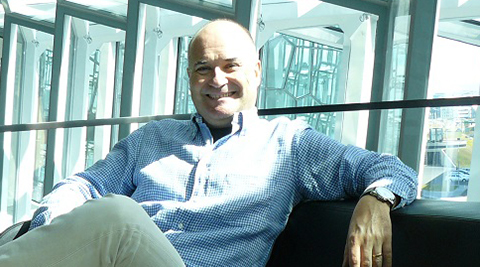The University of Alicante (UA) was created in 1979. Today it educates and trains more than 20.000 national and 3.000 international students and offers 43 undergraduate and 80 postgraduate programs: consequently, it is proportionally one of the fastest growing universities in Spain. Thus, the UA employs over 3.500 researchers and management staff (44%women), which involves an annual budget of 200 million Euros. Currently, UA is investing near to 34M Euros for boosting frontier research and technology transfer processes via spin off, licensing and international promotion mainly. In 2017 the University generated an income of nearly 16 million Euros from research funded projects on a National, Regional, European level and private level thanks to its 227 research groups in many knowledge areas. The UA is within the 250 top universities in the THE Young University Ranking 2018 and it ranks 12th in the Shangai Ranking (ARWU) 2017 (impact of research publications). It is also an appreciated reference point for international relations. Its strategy lies within the context of international cooperation and particularly in the training of university management staff to support the integration of non-EU countries and develop their international status and networks. A virtual tour to the 100% pedestrian campus (Figure 1) is available at: http://web.ua.es/tour-virtual-ua/ua.html. UA is also considered a point of reference for many companies to which the University provides technical assistance, technology transfer, customized training programs, post-graduate studies and cooperates in many R&D programs. In addition, UA has started shaping one of the best Scientific Parks in Spain. To such effect, UA has progressively materialized capital investments and started construction of several buildings to house technical research services, research institutes and a center for the creation of technology-based companies. UA also owns an Industrial Experimentation Area and provides a range of research technical services such as Pilot Plants, Laboratories, Data Process Centre, Advanced Information and Documentation Systems to be used for research purposes. Moreover, the participation in European projects have been increasing in the last years, taking part in 25FP6, 48 FP7 and 32 H2020 projects (9 of them coordinated by UA). Not only Framework program but also Lifelong Learning Programs: 69 Erasmus+, 6 Erasmus Mundus, 65 Tempus and 35 Lifelong Learning Projects, among others. UA provides legal, financial and administrative support to the Research team involved in NEO MAPP via its International Project Management Office (OGPI). OGPI was founded in 2005 in order to assist and consult scientists, researchers and innovative companies in the area of research, innovation and international project management. It provides knowledge and skills for establishing and managing international technology-oriented co-operations to obtain a greater project impact at the scientific and commercial level. Besides, OGPI has a strong track record in supporting European RTD-consortia in proposal preparation, contract negotiation, communication with the EC and project reporting and has developed specific web-based project management and communication system for larger projects consortia. This Office managed the IPR-Helpdesk project for 10 years and the Regional Node of IRC Network (nowadays Enterprise Europe Network) for 14 years.
The ‘Instituto de Física Aplicada a las Ciencias y las Tecnologías (IUFACyT)’ was created in 2009 and its main goal is to Foster basic research applied to physics and other experimental sciences as well as engineering and architecture, medicine and education. IUFACyT also pursue to improve consciousness within Society about the importance of physics in our daily live. More than 50 researchers in 7 official ‘areas of knowledge’ of the UA are part of IUFACyT (Applied Physics, Optics, Physics of the Earth, Radiology and Physical Medicine, System engineering, Signal theory, Didactics of Experimental Sciences). They belong to three different centres and five departments within UA, which makes IUFACyT an extremely multidisciplinary research institute. IUFACyT research lines are focussed in Physics and its applications to Science and Technology, including the research areas in Astronomy and Astrophysics and Planetary Science.
The research Group in Astronomy and Astrophysics (GAA) is the one responsible to carry on the activities related to the NEO-MAPP project. This group has its origin in the early years of the past decade and has two main branches that have been involved in various space studies related to both high energy astrophysics (HEA) and planetary science (PS). Members working in HEA are involved in the ATHENA space mission by the European Space Agency (ESA) and are currently part of a H2020 consortium. The members working in PS –that take part to the current proposal- have been involved in space mission proposals such as ‘MarcoPolo-R’ (ESA), and are presently involved in the ‘Hera’ space mission proposal (ESA). Moreover, the PS branch has a 20-year history of research strictly related to the small solar system bodies (SSSB).




